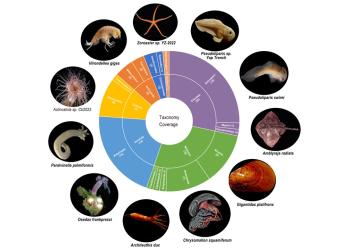Over-regulation of Drones Just Doesn't Fly (只提供英文版本)
By Yu Hongyu, Associate Professor of Mechanical and Aerospace Engineering, HKUST
Unmanned aircraft systems started to gain attention in US military operations more than a decade ago, but nowadays, people enjoy flying drones for photography and videography purposes.
Drones are also gaining widespread acceptance for goods delivery, surveying and scientific research.
I have two recreational drones, so I was eager to examine the three-month drone regulation proposals put out by the Civil Aviation Department in late 2017.
There are six recommendations for the UAS regulatory regime: a registration system; risk-based classification of operations; training and assessment requirements; drone maps; insurance requirements; and indoor operations.
The recommendations are sound, but a number of salient issues were omitted.
The first is the absence of regulations governing drone manufacturers.
The proposals focus on how users should deal with drones, but when we are discussing safety issues, is it not vital that we have to make sure unmanned aerial vehicles are safe in the first place?
Just like there are regulations on vehicle standards and permissible modifications, the manufacture of UAVs should be carried out under a similar regulatory framework.
Many of us are familiar with the Shenzhen-based drone maker DJI, but there are a growing number of other manufacturers that cater especially to the commercial and non-recreational market.
Regulating quality is imperative regardless of the target market and deserves as much attention as drone use.
Another critical differentiation that must be made is between recreational, commercial and scientific uses, the last in schools, research institutes or universities for education and scientific exploration.
We should not overregulate recreational drones: it would be a shame if children can't use these devices due to overly stringent regulations.
Limitations on scientific use should be minimal to promote a spirit of scientific adventure while having, at the same time, enough safety measures.
On the other hand, I believe comprehensive regulations for commercial UAS is absolutely crucial.
Trials are already being held for drones that can carry people, and as with any motorized passenger vehicles, safety is paramount. The same applies to delivery drones. These are mostly used for small and light packages for now, but it is a matter of time before drones capable of flying bulky and potentially dangerous items come to market.
There is also talk of setting standards to unify drone regulations worldwide.
Applying this to commercial drone operations is sensible, since it helps manufacturers develop and sell standardized UAVs that are legally compliant across the globe.
It would also help if there is a clear-cut definition between commercial and recreational drones - operating height, size and other parameters can be added to the equation.
But global regulation of scientific drones may stifle research and experimentation in this still nascent field.
Safety is essential, but we have to strike a balance between advancing drone technology and ensuring safe use.
The article was published in The Standard on June 19, 2019.









